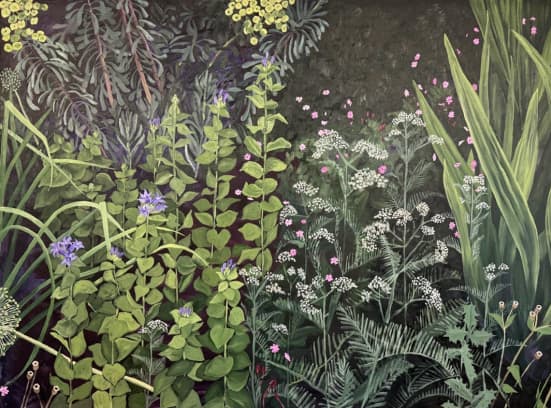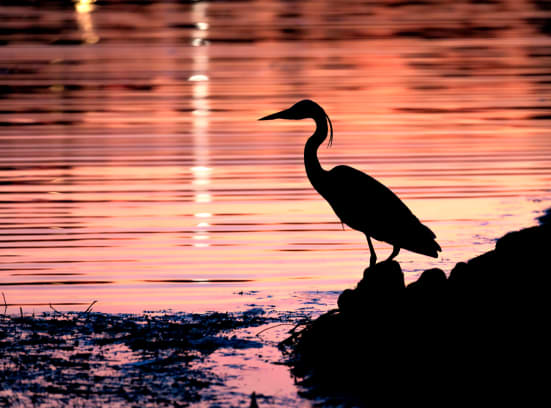We need to design our gardens so they are resilient to the predicted effects of climate change with warmer wetter winters, and hotter drier summers.
Climate change is an undeniable reality, impacting our planet in unprecedented ways. As individuals, we may feel helpless in the face of such a colossal challenge, but there are steps we can take to contribute to the fight against climate change. One such approach is to transform our gardens into climate-resilient spaces that promote biodiversity, conserve resources, and sequester carbon. So, what can we do?
Add Biodiversity
A diverse garden with various plant species fosters a resilient ecosystem that can better adapt to changing climate conditions. It is essential to create habitats for pollinators, birds, and beneficial insects, as they play a significant role in maintaining the balance of nature.
- Say no to toxic chemicals such as pesticides, synthetic fertilizers and weedkillers which contribute to environmental problems. Organic gardening avoids the use of harmful chemicals, relying instead on natural alternatives like seaweed feed and organic manure.
- Include natural water in the garden; natural ponds should be free from chemicals such as chlorine – added planting and shelter for wildlife are ideal.
- Conserve Water as scarcity is a pressing concern in the context of climate change. Implementing water-saving techniques in your garden such as waterbutts or rainwater harvesting systems can make a significant difference.
- Consider alternatives to mown lawns – mow less to allow flowering species to provide food for pollinators; meadow planting is a great alternative and less maintenance.
- Produce compost by managing organic waste effectively to reduce greenhouse gas emissions and enrich the soil in your garden. Composting kitchen scraps, garden trimmings, and leaves creates nutrient-rich humus that enhances soil health.
- Reduce hard landscaping; be cautious with the amount of hard landscaping when building any new garden, opting for sustainable materials and methods. Use permeable paving instead of concrete to allow rainwater to infiltrate the soil and recharge groundwater.
Choose the Right Plants
- Analyse your garden before you start anything, look carefully to note the areas of hot sun throughout the day, along with any deeply shaded spaces. Check the quality of your soil – does it have enough depth; do you know whether it is acidic, alkaline or just neutral?
- Plant trees as they absorb carbon dioxide during photosynthesis and store it in their roots, stems, and leaves. Planting trees not only helps mitigate climate change but also provides shade, reduces urban heat island effects, and supports wildlife. A recent RHS study showed if every UK gardener planted a medium sized tree such as a cherry or crab apple then these trees would store carbon the equivalent of driving 11.4 million times around the earth.
- Consider a design which will encompass several areas, each with different characteristics such as a gravel garden with plants resistant to drought and wind, or swales with plants tolerating both wet and dry conditions.
- Plant the right plant in the right space for both today’s conditions and future predictions. Well designed planting schemes can adapt to events such as flooding or drought.
Suggested plants:
Gravel planting for drought and wind tolerant
- Euphorbia rigida – spreading evergreen with blue, green leaves
- Thymus vulgaris - scented and used in cooking
- Stachys byzantina – evergreen with white woolly leaves
- Stipa tenuissima – a soft deciduous grass
- Lavandula ‘Hidcote’– aromatic scented shrub
- Pinus mugo – an evergreen conifer, bushy and rounded
- Nepeta racemosa – perfect edging plant with blue flowers
- Salvia nemorosa – great with pollinators
- Erigeron karvinskianus – white daisies turning pink
- Centranthus ruber – red, pink or white valerian
- Helichrysum italicum – Curry plant
Swale planting for wet and dry tolerant of flooding
- Lythrum salicaria – purple loosestrife
- Carex divulsa – sedge
- Osmunda regalis – Royal fern
- Iris pseudacorus – yellow iris
- Angelica archangelica – tall perennial with light yellow umbels
The choice of species is key but soil must be well prepared; planting in autumn before the rainfall will give the best start then mulch with organic compost to preserve moisture and reduce week growth.
Susan Dunstall Limited: gardens and landscape design









